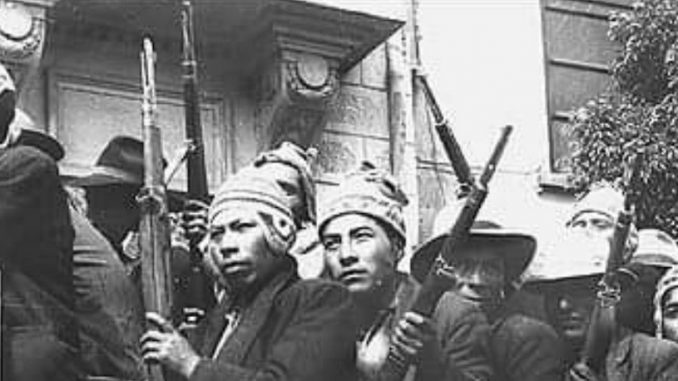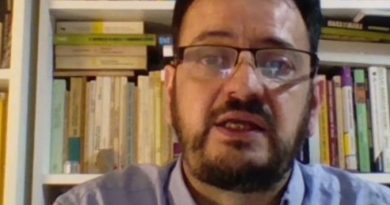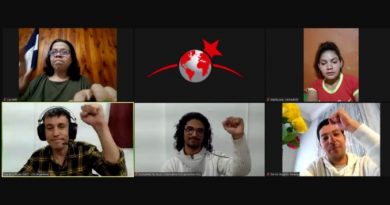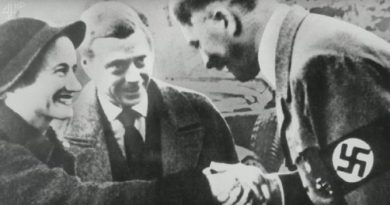The Bolivian Revolution of 1952
We share below the report made by our colleague Alejandro Bodart in Panorama Internacional, the program of the LIS.
As we have explained on several occasions, at the end of the Second World War and without Trotsky, who had been killed in 1940, the Fourth International was left in the hands of a petty bourgeois leadership, without any experience, without tradition or training in the class struggle.
This untested address, through revisionist deviations and blunders, ended up dispersing the forces of Trotskyism in multiple organizations.
Today we are going to stop at the greatest opportunity that Trotskyism had in its history and that was wasted by that leadership: the bolivian revolution of 1952.
This year, the working class in Bolivia carried out one of the most perfect revolutions in history, comparable to the Russian Revolution of 1917.
Unlike all other postwar revolutions, This clearly had the working class in front and a Trotskyist party with mass influence in a position to dispute and take power.
The revolution of 1952 managed to destroy the bourgeois army, worker and peasant militias were created that seized all the weapons.
And an organism arose that became the only true power in the country, the COB, the Central Obrera Boliviana, where the entire working class was referenced and centralized, the peasantry and the militias and where Trotskyism managed to have a decisive weight.
But the Revolutionary Workers Party, the Bolivian section of the Fourth International, squandered the historic opportunity presented to him.
Bolivia was governed by the regime of the mining and landowner oligarchy known as La Rosca. This entered an acute crisis after being defeated in the Chaco war against Paraguay.
The army is divided and a nationalist sector emerges that takes power in 1936 and nationalize part of the oil, in the heat of a rise of the workers and popular struggle.
Connected to this, self-styled "military socialism", the MNR emerged, the Revolutionary Nationalist Movement, a middle class party with a reformist program.
I had a fraction, that of Paz Estenssoro, that would be linked to mining unionism, supporting in 1944 the foundation of the Union Federation of Mining Workers of Bolivia.
But the mining workers were in a process of politicization and radicalization that went beyond the nationalism of the MNR.
In 1946, the Federation of Miners adopted the Pulacayo program, drawn up by the Trotskyist POR and comprising a program of revolutionary transition, political and socialist, inspired by the Transitional Program that Leon Trotsky had written.
From that moment, Trotskyism would not stop growing and would reach a mass weight among the workers..
The same year, La Rosca regained the government with a gorilla coup that had the support of the Communist Party, then aligned with the United States and accusing the nationalist camp of being Nazi.
The new government tried to defeat the miners but lost all social support after perpetrating the well-known white massacre at the Siglo XXI mine and had to call elections in 1951.
The MNR won the elections, but the military gave a new blow to prevent him from taking over the government.
He 9 April 1952 the MNR with the police and a sector of the army attempted a counterattack, what a failure, but an impressive workers and popular insurrection was unleashed.
Thus began this extraordinary revolution.
Police, defeated, handed over some weapons to workers in the capital of La Paz.
In the meantime, Oruro miners defeated the army, they seized the regiments, they armed themselves and began to march towards La Paz.
The workers in the capital liquidated the seven regiments that made up the base of the Bolivian army, and they also appropriated all the weapons.
After two days of combat, The military coup had fallen and the worker and peasant militias were the only armed forces left in the country, most of them led by Trotskyism. The MNR takes over the government, but the real power was in the hands of the masses in arms, who organized all the unions and the militias creating the Central Obrera Boliviana on 17 of April.
Under pressure from the masses in revolution, the government nationalized the mines and integrated the unions into the leadership of the state company with veto power. Trade unions and workers and peasant organizations acquired legislative powers, executive and judicial and begin to organize all the activities of the country. A dual power situation develops, similar to that of Russia after the February revolution in 1917, with an impotent bourgeois government and real power in the hands of the organized working class.
The COB had the possibility to take full power, bury the bourgeois state, establish a workers' and peasants' government supported by the workers' militias and carry out the revolutionary program of Pulacayo.
But the reformist sectors of the COB, with Juán Lechín, from the left wing of the MNR itself to the head, defended the government of Paz Estenssoro and occupied two ministries in his government.
tragically, the POR, what had 6 of the 13 members of the Central Committee of the COB and a decisive weight among the miners and the militias, instead of fighting for a revolutionary policy, What happened to raise all the power to the COB, also supported (critically) to the MNR government.
The Fourth International then led by Pablo and Mandel had adopted the politics of entryism sui generis.
It characterized that a Third World War was coming against the USSR, that this war was going to force the Stalinist Communist Parties to become revolutionaries, and that then the Trotskyists had to integrate and support them.
That line was imposed on a global scale. Where there were no strong Stalinist parties, they replaced them with reformist socialists or bourgeois nationalists.
In Bolivia that meant giving critical support to the bourgeois MNR government instead of fighting for the COB to take power..
That capitulation to bourgeois nationalism, they hid it behind a false objectivism. They argued that the pressure of the mass movement was so strong that it would force the MNR to make a socialist revolution..
They proposed for Bolivia and unfortunately the POR took it forward, a policy opposite to that of Lenin and Trotsky in Russia, where in front of the bourgeois government of Kerensky they opposed all the power to the Soviets.
The stream from which we come, who had joined the Fourth International a few years earlier, developed a relentless fight against the betrayal of the Bolivian POR, warning that it would lead to the defeat of the revolution and the crisis of Bolivian Trotskyism, insisting that the only revolutionary policy at that time was to raise "all power to the COB".
All the conditions were in place for that to happen. The POR had enough weight in the COB and in the militias to fight for that background exit, that it was also the only one that could lead the revolution to triumph.
tragically, the central thesis of the theory of permanent revolution, that everything that does not advance ends up regressing, would be confirmed once again by the negative.
The oxygen that Lechín and POR gave him, allowed Paz Estenssoro to demobilize the revolution with some democratic concessions, like universal suffrage and limited land reform, and then begin to disassemble his conquests.
In 1953 the government begins to rebuild the regular army and disarm the militias with the help of the United States and the IMF.
But it would take a long time to achieve it to the point that in many celebrations the army had to borrow weapons from the COB to parade and then return them.
The POR would later denounce the government's turn to the right, but instead of breaking, demands that the left of the MNR assume power.
Nevertheless, at the first congress of the COB, that was done in the 54, it ended up approving the reconstruction of the army with the help of the United States.
Just in the 56, when the revolutionary wave had subsided and the MNR had stabilized in power and the army had restructured, the POR ended up raising the slogan, already propaganda, from "all power to the COB".
As in any revolution that does not go to the bottom, the reaction cost the Bolivian people dearly. Decades of neoliberalism, looting and new dictatorships.
In the first decade of this century, the bolivian masses, again with the miners at the helm, they took another bourgeois government.
Regrettably, a new reformist leadership, this time the MAS of Evo Morales, stopped the process, reconciled with the oligarchy and ended up disappointing the masses and then falling.
But few working peoples have the persistence of the Bolivian, which is again on the move against an exhausted regime.
We revolutionaries must draw conclusions from past experiences so that the next revolutionary opportunity, that will come sooner rather than later, don't be wasted.
At the end of last year the workers rose again and on two occasions power was in the air again.
Evo Morales fell due to the general rebellion of the workers and important sectors of the peasantry.
The COB leadership, led by the bureaucracy refused to intervene in the political crisis.
Nor is there a revolutionary party with mass weight to return to the center of the debate the need for the workers and the people to govern through their own organizations..
That absence and the collaboration of Morales's MAS from the chamber of deputies and senators who never stopped directing allowed the third in the line of succession to come to power, the right-wing Añez, who has already said that he will not stand in the next elections, because it has no social base.
The most urgent task in Bolivia is to unite the revolutionaries and build a party that, facing the next crisis, raise a correct policy and strengthen the perspective of a government of the workers and the people.
The LIS works at the service of this task.




